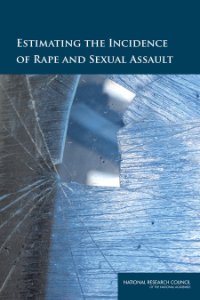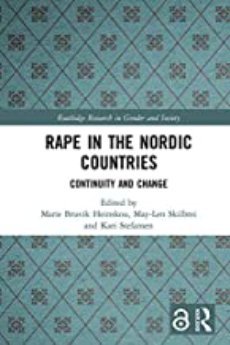By: Mugisho Ndabuli Theophile
This book highlights that there is a wide room for women victims of rape during war and those who are expelled from their families because they have been raped for empowerment. In this vein, the book portrays the different possibilities the Congolese Females Action for Promoting Rights and Development (COFAPRI) is exploring in order to empower rural women victims of war rape and domestic violence in the rural villages of the Democratic Republic of Congo (DR Congo). The aim of this emancipation is to help these victims to scar up both their physical and moral wounds in order to reshape the meaning of their lives, as well as their FKLOGUHQ¶V and then trace a peaceful way toward a future that gives hope and confidence in their hearts.
COFAPRI is a women’s grassroots organization that is operating in remote and dangerous villages of the eastern DR Congo. The villages of this part of the world are still a hub for militia and hooligans who are intimidating, raping, killing pitilessly women, children and the ecosystem. The organization is closely and tirelessly working with rural women who are victims of local discriminatory traditions in order to empower them for a better future. Such liberation aims to break these discriminatory traditions that reduce women and girls to nothing, making them second class people who have no word in families and in the country.
Biased traditions remain alarming and worse in remote villages where most girls and women are illiterate. In these areas, these mores are men’s invention and they [traditions] are vigorously protected by the same men for their personal interests. The main reason behind this safeguard is that the DR Congo is a strong paternalistic system that protects by all costs these traditions, making the women to be subjugated to men and remain eternal second class people who must live in total obedience of and dependence on men.
The situation of these victims worsened with the advent of warfare that added more weight on their natural plights of cultures. The women and girls, no matter their age and status, have been raped since 1996 (for more than 20 years today) when the unending wars started. Since the target of the fighters were women and girls, rape has then been used in different contexts, sometimes the victims were raped in the eyes of their relatives, children, husband, friends and neighbors. Through such terror, rape became an easy arm of war used by the rapists. The evil doers have been directing rape toward women and girls of all ages. In this period of cyclic wars has never been discriminatory, as it applied to women, girls, men and boys. With focus on women and girls victims, the aim of the rapists was but to hurt the victim physically and morally by dehumanizing her, cutting her off of her family and her community in order to weaken her properly, and so she can die while alive.
This did cause the victim unbearable shame and moral death. The victims were killed twice while alive. Rape caused the victims moral and physical open wounds and ultimate detachment from families and communities. These women have been raped and some of them contaminated HIV/AIDS and STDs (Sexually Transmitted Diseases); many others got pregnancies that delivered fatherless children.
The children born of rape never knew their fathers. As earlier stated, the DR Congo is a patriarchal community where women follow blindly all decisions made by the masters of traditions. So, children born of rape become detached from the family of the mother and that of the husband of the mother. Not having a family because one has no father totally isolates and discriminates the innocent child, which sometimes traumatizes them.
It is in this context that COFAPRI initiated some ways that these victims can walk in order to reach the other side of the tunnel. As a way of remaking their lives, these victims are involved in various income generating activities in their different villages. The activities include, among others, sewing, animal rearing, knitting, beading and small business. In addition, they also involve in basic reading and writing in order to better involve in their developmental activities. The women also get hygienic education in order to improve on their life conditions. All these activities are done in teams where participants exchange on different issues regarding their lives in home and in community. In their teams, and in turns, each member is at the same time a learner and a teacher. All in all, this aims to promote the rights of women and children, as well as supporting them along their new life in order to overcome trauma and poverty.
The children born of rape also suffer protracted discrimination in their families since they are wrongly believed to be social cast and burden. COFAPRI helps these children to remake their lives for a harmonious future by facilitating them to get school enrolment. The children are also accompanied by the same organization in their studies; they are paid school fees and equipment. Being fatherless and social cast has often created a negative personal consideration in the minds of these children, which ultimately pushes them to join local militia or other gangs associations in order to revenge, which makes the cycle of wars become repeated and perpetual. This makes more women and girls to be raped, and more fatherless children to be born. Such children, due to the social disrespect they experience, decide to join local militia with the aim of revenging. The above mentioned organization is doing everything they can for the moment in order to hinder children from linking with the militia as this will certainly make them act the same way as their anonymous fathers behaved. It is in this context that the children are getting support from this incredible organization that is operating in the remote and dangerous villages of the DR Congo.
The writer of this book collected information via desk research along with data from the organization. The book is part of details from a video conference that the Co-Founder and Executive Secretary of COFAPRI presented to Red Hila, in their last meeting in Colombia in 2014. In order to support the story, some quotes from the women and the children we work with have been inserted in the story, along with some of their pictures. The women gave us full permission to use their photos and quotes, and we got consent, as well, from the mothers of the children. In the minds of the women and the children, using their pictures and stories will hugely contribute to spreading the word in the world about the quandaries they are living while confined to their remote villages in the eastern DR Congo. They also think this is a way the world can equally learn of the steps they have already walked toward developmental empowerment.
The different wars the country has been plunged in have caused moral harm, as well as physical one to the victims. Basing on this, the organization is also empowering the abusers and the victims to forgive each other in order to reach social harmony. By forgiving, the victims want the reality on how they were raped be told with assurance. This will help both the abuser and the abused as their morals will be stable. If the women victims are forgiving their abusers, harmony can settle in the hearts of the people and so they can work together as a united team that has a common goal.
The organization is also committed to educate the population at large on ways of scaling down the effects of traditional discriminatory rules that have negatively affected women and children in their areas. In the same vein, it focuses on making the victims of rape and domestic violence be confident and remake their lives after the predicament of warfare they have endured within themselves, in their homes and in families, as well as in the wider community. Through education, COFAPRI believes a new horizon can still work for these innocent victims. Education is so powerful that it can generate hope in hopeless minds, it can rebuild broken hearts by making women and children pillars of their families, communities and the nation in the future. This is eventually supported by Sydney J. Harris, as he states “the whole purpose of education is to turn mirrors into windows”.
LAP Lambert Academic Publishing 2016













